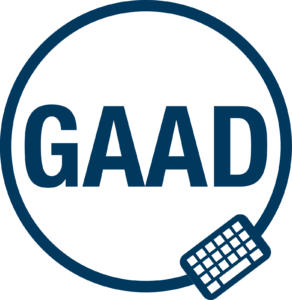 Thursday, May 20, 2021 is the 10th annual Global Accessibility Awareness Day (GAAD). The purpose of the day is to “get everyone talking, thinking and learning about digital access and inclusion, and the more than One Billion people with disabilities/impairments”. Visit the GAAD link to learn more about Digital Accessibility, consider common barriers, and watch first-hand accounts on how digital accessibility can change lives.
Thursday, May 20, 2021 is the 10th annual Global Accessibility Awareness Day (GAAD). The purpose of the day is to “get everyone talking, thinking and learning about digital access and inclusion, and the more than One Billion people with disabilities/impairments”. Visit the GAAD link to learn more about Digital Accessibility, consider common barriers, and watch first-hand accounts on how digital accessibility can change lives.
Distance Learning and the sudden switch to remote has both highlighted and exacerbated the problems and barriers faced by students with disabilities, and while there has been a greater emphasis on diversity and inclusion in recent years, the pandemic has shown us that there is still a long way to go.
Some Context
- 61.4 million Americans have some type of disability – that is 25.7% of the US population (or 1 in 4) people.
- 8.5% have a disability that impacts computer access. This doesn’t include learning or cognitive disabilities, which many estimate to be the largest disability group of all!
- 19.4% of post-secondary students and 4.6% of education professionals report having a disability.
Keep in mind the word “report” above – the number of students impacted by a disability is likely much higher. A 2015 study found that only 35% of postsecondary students who had an IEP in secondary school disclosed their disability in college and a 2020 EDUCAUSE study found that 49% of students with disabilities do not register or request support from their institution’s accessibility services office. For these students, accessible materials can be a lifeline and the difference between success and failure.
Take Action
Small changes can make a big difference for many students. In honor of this year’s GAAD, upgrade the accessibility of at least one of your course documents or materials. It could be as easy as adding Alternative Text or Headings to a document or using a built-in automated accessibility tool to check and improve accessibility.
Resources
Here are some resources to help get you started:
- The Aim for Accessibility Resource Page – information on accessibility broken into eight easy to understand segments. Each segment has things to keep in mind, tips and tricks, and step-by-step tutorials.
- A Document Accessibility Checklist – an easy checklist to help make your documents accessible.
- The article 20 Tips for Teaching an Accessible Online Course from the DO-IT center at the University of Washington has some helpful information on the how and why of creating accessible documents.
For more information or assistance with digital accessibility, contact Accessibility Advocate Heather Mariger at heather.mariger@chemeketa.edu.
Thank you for all that you do!
